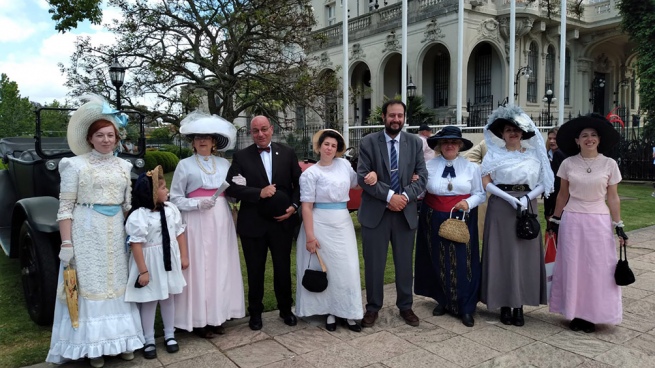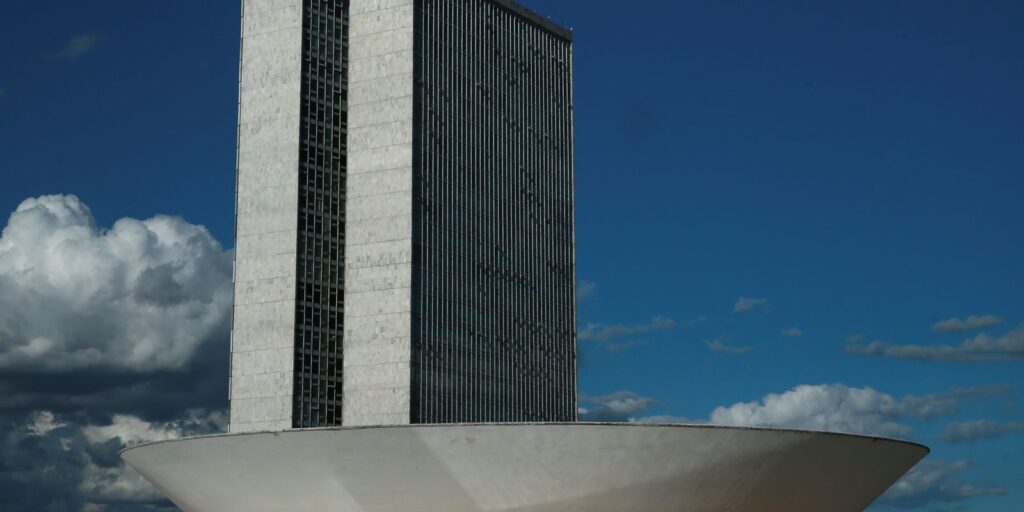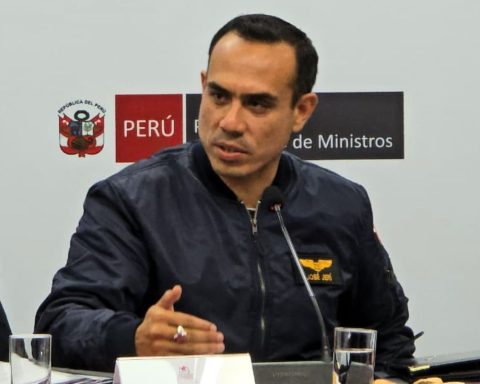They seem to come out of the pages of any of Jane Austen’s novels but they arrive by car, subway or bicycle. They are the re-enactors who make up the Argentine Augusta Victorian Society, a subsidiary of one of the same name that emerged in Spain, dedicated to recovering the charm of clothing, gastronomy and customs of the time in which Queen Victoria of England ruled. They participate in various patriotic events and anniversaries, but they also organize their own meetings to have tea, dance a waltz or talk while the ladies exercise the language of the fan.
From here you are invited to learn who are the followers of Victorian recreationism and how do they do their immersive experience.

A little history
Historical re-enactment is an activity that brings together people who want to recreate a specific event or a historical period, It is a long-standing tradition since the Romans used to organize representations of their most emblematic battles in their coliseums as public spectacles and in medieval tournaments themes and activities of Ancient Rome were taken up again.

In Argentina there is “living history”, the translation of the English expression “living history” for all tastes: medieval battles, Nordic meetings, battalions of patricians and also gatherings such as those of the Augusta Victorian Society.
The first step of the entity was taken Evangelina Ledesma Bussoli a graduate in Psychology, with a thesis on the way for a Master’s Degree in Human Resources, who works in the Ministry of Social Development of the Nation: “Since I was little I have liked History, and coming from a family with a very long history connected to that of the country and in the Spanish, I felt it so much my own, that it was natural, that is why my activities naturally drifted towards recreation”, clarifies one of the founding members of the society.
His teammate was Sebastian Diaz, a professor of visual arts and clothing design and also a student of History at the University of Buenos Aires.
Together they discovered a Spanish society that recreated the Victorian era. They immediately got together and began to organize recreation meetings. In 2009 they founded the Argentine subsidiary to make history present, but they decided to focus it on the social and cultural events that took place in Argentina in the period from 1790 to 1919.
To revive that era, the members of the Society participate in patriotic acts, meetings of historical dissemination in the Beccar Varela, Del Traje, Fernández Blanco and Decorative Art museums, they join in commemorations such as the Recoleta-Tigre race of 1906, the beginnings of the subway, and they also organize their own events. They also give workshops, talks and shows that are advertised on the Society’s social media accounts.

“One of the most memorable activities we participated in was a regency dancefor which we had to learn the dances of the time. That day those of us present recited our own poetry and those of authors of the time such as Lord Byron”, recalls Díaz, who gets excited when he recounts the time that he challenged a colleague to a duel during a period picnic in the Rose Garden and the Edwardian-era dinner they had at El Globo restaurant where he was dressed as one of the characters from the Peaky Blinders series.

Matilde Cloutetanother member of the entity, are personnel of the Argentine Federal Police and came to the group from some photos of another student in a photography workshop he was doing. Remember the participation in the recreation of the First English invasion at Fort Ensenada and the picnics and dances at the Palacio Ceci de Devoto and the gatherings at the Los Ombúes de San Isidro villa, equal to those organized by Mariquita Sanchez de Thompson in which the national anthem was sung for the first time.
She never ceases to be amazed at the reactions of the public that witnesses the recreation: “Everyone is surprised, especially if we are on public transport like the subway. Then they let themselves be trapped by the stories, by what happens and then they ask you about classic topics such as the use of the corset”,
“It’s not just wearing clothes. One has to have a certain attitude to personify a lady of yesteryear”, warns Analia Romero, a degree in Security with forensic specializations. And he describes: “People are concerned about what the underwear was like and sometimes they tell you that the corset was a punishment, but, in general, they find it very attractive to look at.” “There are also those who remember their grandparents and want to tell you an anecdote from the time,” adds Ledesma Bussoli.
sew and embroider

To be dressed to the nines at dances, social gatherings and battles recreationists research in books and the Internet not only what the clothes of the different eras were like, but also what the accessories were like, what were the dances and the meals that were shared. In Argentina it does not happen like in Spain where there are specialized shops that sell items similar to those used in each era with a certificate of historicity signed by an academic.

“The clothes we make ourselves, since they have a different pattern, which current dressmakers do not understand. There are some wonderful seamstresses in the group who take great care in their research and collect material from outside that complements them in their training and gets us out of trouble in clothing. One of them works at the Teatro Colón. Another has a university level in Costume Design”, says the founder of the Society.
While Cloutet assures that everything she wears is made by herself: “I try to respect historical rigor as much as possiblethe fabrics I use, their patterns or colors. If it is prior to 1850 it is sewn by hand and since 1900 I use the machine more. I also have heirlooms from my grandmother and have bought two original things from 1905 that are adorable.”
Then he gets excited: “Many people give us their precious objects because they belonged to dear relatives and they treasure them but they see in us people who will use them with respect just as when they were in fashion.”
“Putting together the locker room takes a significant budget, since what we do is not tariffed. It is something we do for the love of history, to keep it alive in another way. Because reading a book is great, but seeing it live and direct is something else. Luckily, in my case, my family supports me and accompanies me”, says Romero, who took his passion for old things to dedicate himself to carpentry for restore vintage furniture.
Back to the past

When explaining why historical re-enactment and not cosplay, Díaz tells what fascinates him about the historical past: “Each era that we recreate is different and has its charm. The clothes, the way of behaving, the codes and manners. People had no television or internet and their fun was telling stories or reading books aloud, singing or playing instruments. And many more people now knew how to do it.”
For your part Cloutet admits that you cannot decide for a single period. “I am in medieval groups, and I am part of a parallel group called the Río de la Plata Historical Society that covers from the founding of Buenos Aires. I also collaborate sometimes with the group of the Decade of the 40s and with the Argentine Association of Reenactors of the Second World War”, he lists.
Romero, on the other hand, says present in the Nordic group Arme Vik, the Knights of Constantinople, the Río de la Plata Society and the Golden Years of the 1940s.
“It is not necessary to look so much outside when we have what is ours and we have to give it value. With the support of the State, many things can be done, taking advantage of historical tourism. We cannot waste that resource”, insists Ledesma, willing to multiply the spread of historical re-enactment, remember History”
How to join or enjoy the encounters to relive history
The Sociedad Victoriana Augusta Argentina is always open to receive new members. But it also shares both the events in which it participates and information and images about the historical period to which it is dedicated. In order not to miss anything, you can follow her on her profile Facebook or Instagram or send an email to [email protected].

















